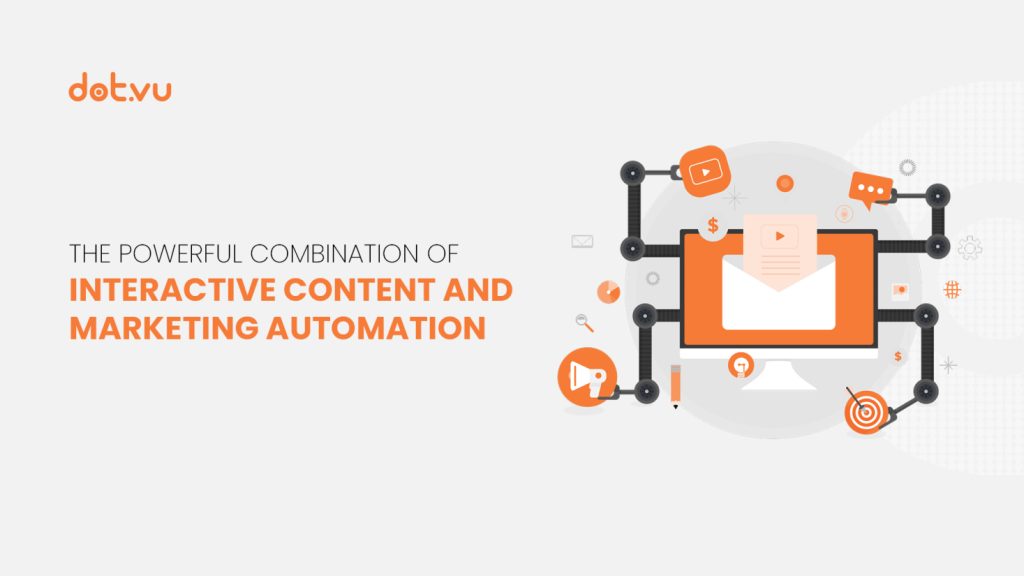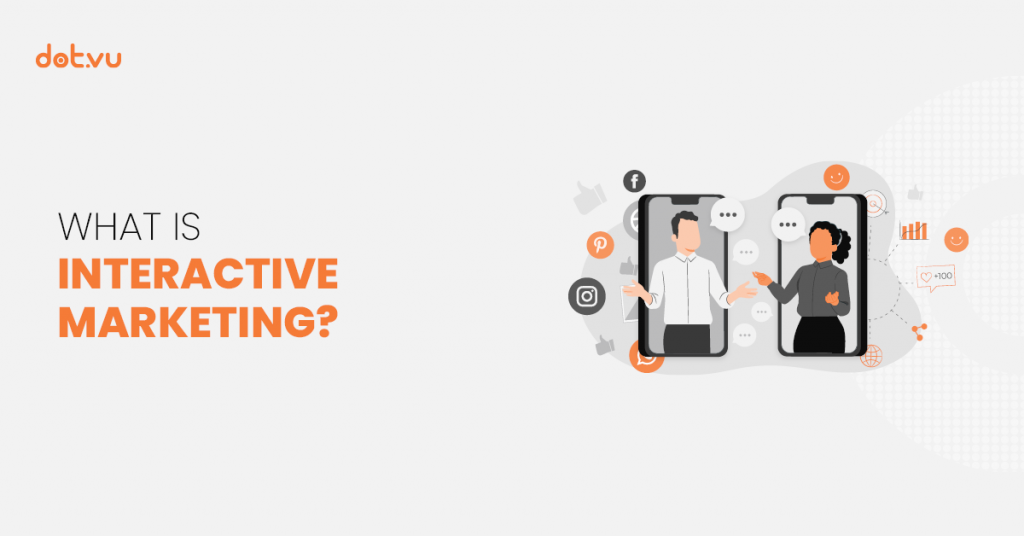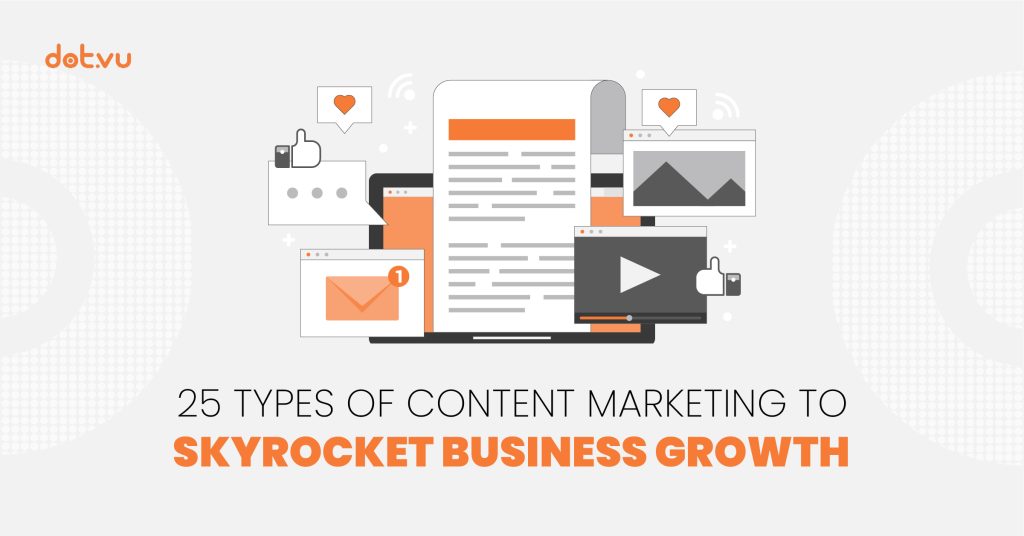
There are many types of content marketing that can confuse businesses and marketers who are trying to decide on the most effective strategy for their specific goals and target audience. The challenge isn’t just about knowing the options but figuring out how to blend them into a harmonious and effective strategy that resonates with your taste buds—or, in this case, your business goals.
Furthermore, a well-defined content marketing strategy should prioritize quality over quantity. In fact, according to the Content Marketing Institute, 73% of B2B marketers and 70% of B2C marketers use content marketing as part of their overall marketing strategy. Instead of spreading resources thinly across various content types, businesses should focus on producing high-quality, relevant content that adds value to their audience. Whether it’s educational blog posts, engaging videos, or Interactive Content, the emphasis should be on creating content that builds trust, establishes authority, and fosters meaningful connections with the target audience. In this blog post, we’ll uncover 20 distinct types of content marketing, each designed to revolutionize how you connect with your audience, elevate your online presence, and spur the growth of your business.
Table of content:
Importance of content marketing
Think of content marketing as more than just a strategy, it’s the beating heart of your brand’s story. Content marketing is not just about pushing products, it’s about telling a story about your products or services that are relatable and resonates with your audience.
In today’s age, consumers are spoiled with choices and bombarded with information, this is where content marketing makes it a breeze when it comes to selling stuff. It’s all about building trust, making connections and creating a brand that sticks around.
By doing so, your brand will not just be a business providing services blindly to your audience, but you become the narrator of your brand. What’s cool about content marketing is that you also get to educate and empower your target audience. Content marketing can come in many forms such as blogs, podcasts, guides, and many more. When implementing content marketing, you won’t be “just” a brand, instead, you become a trusted seller in your industry.
SEO and content marketing
Picture SEO and content marketing as dance partners, gracefully moving in sync towards a shared goal—visibility. In the intricate dance of digital discovery, keywords play a crucial role. They’re not just phrases but strategic elements that guide your audience through the labyrinth of online content. The synergy between SEO and content marketing is not merely about ranking high on search engines; it’s about being the solution to your audience’s queries.
Now, let’s embark on our journey through these 20 types of content marketing, each a brushstroke on the canvas of your brand’s narrative.
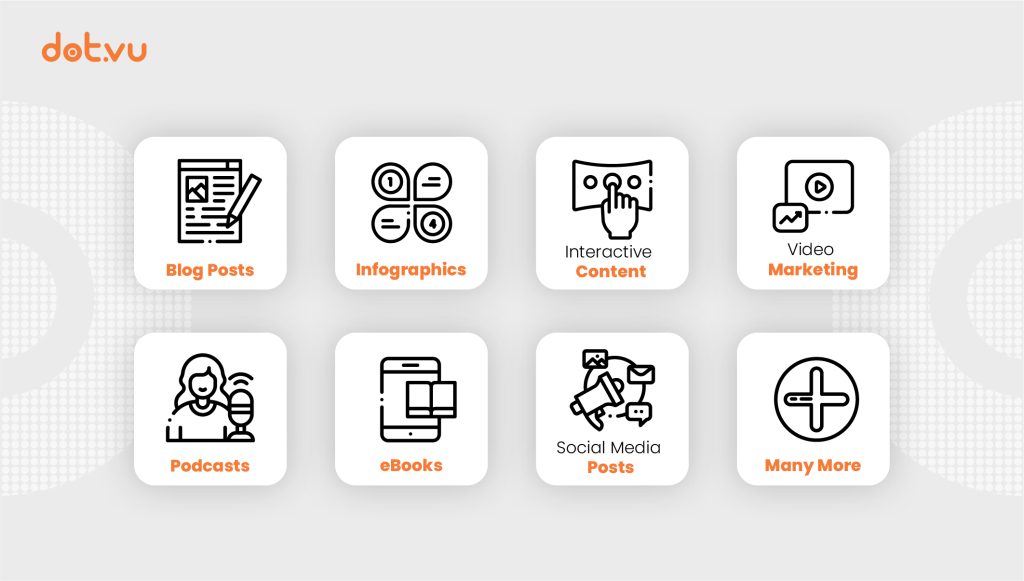
25 types of content marketing to boost your business growth
Here are 25 essential types of content marketing that will grow your business:
- Blog posts
- Infographics
- Interactive Content
- Video marketing
- Podcasts
- EBooks
- Social media posts
- Email marketing
- Webinars or online events
- Case studies
- User generated content
- Gated content
- Live streaming
- Augmented reality content
- Website popups
- Polls
- Surveys
- News and press releases
- Contests
- Courses
- Checklists
- Guides and How-tos
- Influencer marketing
- Micro content
- Product demos and reviews
1. Blog posts
Regularly publishing high-quality blog posts can establish your business as an authority in your industry. It helps drive organic traffic to your website and keeps your audience informed. It’s a canvas where words come alive, forming stories that resonate with your audience. Successful blog campaigns are not just about delivering information; they’re about creating immersive journeys—narratives that captivate, educate, and invite readers to be part of something larger.
Blogs go beyond being a collection of articles. They create an invitation to a conversation. Engaging your audience through comments, feedback, and shared experiences transforms your blog into a dynamic space where ideas are exchanged, and relationships are nurtured. The conversational aspect of a blog is a powerful tool for building trust. When readers see that your brand is responsive, open to feedback, and genuinely interested in their thoughts, it humanizes your business. This human touch goes a long way in establishing a connection that transcends the typical nature of human interaction.
Pro tip: Add interactive elements like polls or games for a more engaging and enjoyable reader experience.
2. Infographics
Retaining information through information overload can be a challenging task which is why infographics emerge as visual storytellers, simplifying complex data into digestible visual narratives. They go beyond static images; they’re dynamic tools that capture attention and convey information in a format that’s both engaging and memorable.

Consider infographics as the visual ambassadors of your brand, distilling intricate concepts into vibrant, shareable snapshots. The success of an infographic lies not just in its design but in its ability to make data accessible, fostering a deeper connection with your audience.
The best part about it is that you can use infographics on your social media platforms. They are easily shareable, making them ideal for conveying your brand message across various platforms. The visually striking nature of infographics encourages users to share them, transforming your audience into brand advocates. This viral potential can exponentially expand your reach, helping your brand break through the noise and capture the attention of new audiences.
3. Interactive Content
Interactive Content is not a monologue; it’s a dialogue between your brand and your audience. It’s a dynamic experience where users actively participate, forging a connection that goes beyond passive consumption. Whether it’s quizzes, polls, or Interactive Assessments, the goal is to transform your content into an engaging journey.
The key is to understand your audience’s preferences and tailor Interactive Content that aligns with their interests. This approach not only captures attention but also creates a sense of involvement, turning your audience from spectators into active participants.
Moreover, Interactive Content provides valuable data and insights into user behaviour. Analytics from Interactive Quizzes, Polls, and Assessments can offer a glimpse into the preferences and opinions of your audience. This data-driven approach allows you to refine your content strategy, ensuring that future Interactive Experiences are even more aligned with the desires of your audience.
Here are some of the many examples of Interactive Content:
Interactive Quiz
- An Interactive Quiz is an online quiz that requires active participation from users. Unlike traditional quizzes where participants just answer questions, Interactive Quizzes often involve engaging features such as multimedia, animations, challenges, or rewards. The competitive or rewarding aspects of quizzes can motivate users to actively participate, leading to a higher retention of attention.

Additionally, Interactive Quizzes with gamification often gives a sense of accomplishment, as participants receive immediate feedback or rewards based on their performance.
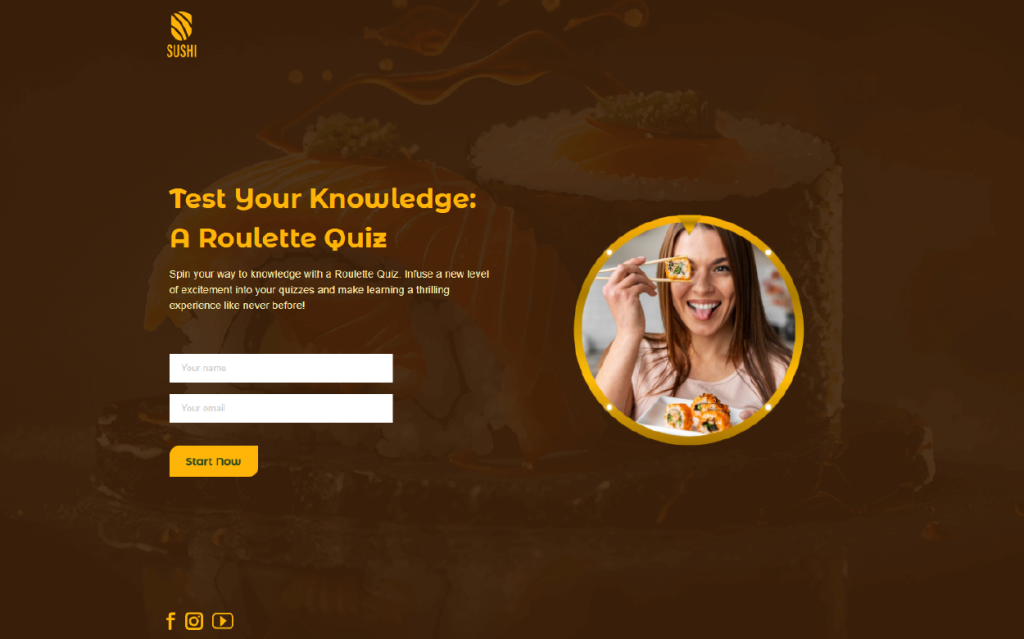
Marketing Games
- Marketing Games are gamified content that is used to create a memorable experience for users. They are mini online games that can be used to attract new customers, engage audiences, promote products, or even boost your email lists. You can generate valuable user data and insights such as actions, preferences, and behaviours when a participant is engaged in a game. This data can then be used to tailor future marketing strategies, providing a more personalized and effective approach.

Personality Tests
- Personality Tests are one of the most popular forms of online quizzes. It is often used to engage your audience and learn about their personality traits and preferences. It can also help to strengthen your brand identity and promote your products.

Social Interactive Content
- Social Interactive Content involves a social element, prompting customers to share the experience with friends, similar to referral marketing. The focus lies in building positive brand connections by fostering engagement and reinforcing personal experiences. Through these shared interactions, brands can cultivate a sense of community and trust, leveraging the influence of peer recommendations to enhance your overall market presence.
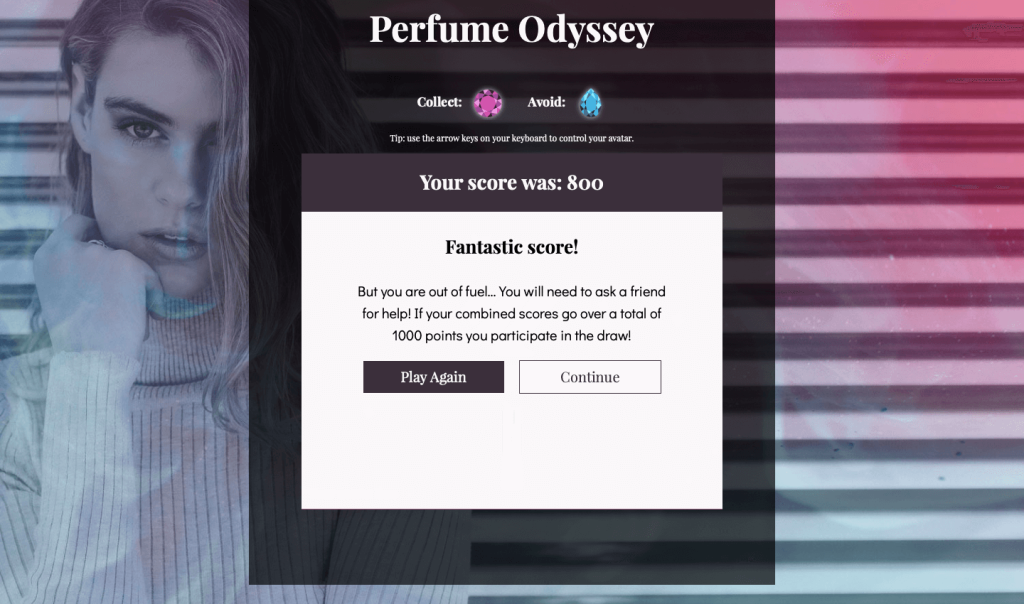
4. Video marketing
Videos are the storytellers of the digital age, transcending language barriers to evoke emotions and build connections. It’s not just about the production quality but it’s about the story you tell. Video marketing isn’t confined to traditional advertisements; it’s about creating narratives that resonate on a personal level.
Consider your video content as mini-movies, each with a plot, characters, and a compelling message. Whether it’s behind-the-scenes glimpses or customer testimonials, videos have the potential to humanize your brand, making it relatable and memorable.
And since we all know video marketing is a great type of content marketing, why not make it Interactive as well? It can be a personalized Interactive Video for your audience or even a Branching Video that adapts based on user choices. The beauty of Interactive Videos lies not only in their engagement potential but also in their capacity to gather valuable insights.

5. Podcasts
Podcasts represents intimate conversations that invite your audience into a world of shared insights and experiences. The success of a podcast lies not only in its content but in its ability to create a sense of connection with listeners.
As a matter of fact, Spotify alone has around 5 million podcast titles on its platform.

Podcasts provide an opportunity to share industry insights, interviews, and discussions. They are a convenient way for your audience to consume content while on the go. What makes podcasts particularly compelling is their accessibility. Listeners can tune in while commuting, working out, or doing household chores, turning what might be mundane tasks into opportunities for learning and entertainment. This convenience not only broadens your audience reach but also allows individuals to seamlessly integrate your content into their daily lives.

A prime example of a successful Podcast is Chanel 3.55. Their podcast deep dives into the world of fashion and art, uncovering the personalities behind prominent brands. The podcast’s tone is immediately established by carefully curated music, creating an immersive experience. Moreover, its inclusivity is evident through episodes in English, French, Mandarin, Korean, and Arabic, catering to a diverse audience. Apart from that, the podcast presents various episode formats, adding depth and versatility to the listener’s experience.
Engage with your audience by encouraging feedback, questions, and even incorporating listener stories. This two-way communication transforms your podcast from a one-sided conversation to a community-driven platform.
6. eBooks
Yes, we hear you, eBooks are just extended blog posts… but actually, they’re comprehensive guides that position your brand as an authority in your field. The value of an eBook lies not just in the quantity of information but in the quality and relevance of the insights it delivers. It’s an opportunity to go beyond the surface and offer in-depth analysis, expert opinions, and practical solutions to the problems your audience may be facing.

By providing this level of detail, your brand not only educates your audience but also establishes itself as a go-to resource for reliable and valuable information. Think of your eBook as a curated journey, guiding your audience through a topic in a way that’s informative and valuable. It’s an opportunity to showcase your expertise and establish your brand as a go-to source for relevant information.
7. Social media posts
Utilizing various social media platforms for content distribution can help you reach a broader audience. Consistent and engaging social media posts can increase brand awareness and foster community engagement. Each post should be a moment that resonates with your audience, creating a memorable snapshot of your brand. Actively participating in conversations, responding to comments, and joining trending topics contribute to the ongoing dialogue between your brand and your audience. The authenticity and responsiveness of your engagement contribute to the humanization of your brand, reinforcing the idea that there are real people behind the posts who value and appreciate the community they’ve built.
Consider your social media channels as windows into your brand’s world. Whether it’s Instagram, Twitter, or LinkedIn, let your posts reflect the personality and values of your brand. Engage with your audience by responding to comments, participating in trending conversations, and maintaining a consistent and authentic presence.
Social media posts are particularly effective for online marketing for small businesses, because they provide a cost-effective way to reach a targeted audience and build brand awareness.
8. Email marketing
Email remains a powerful tool for nurturing leads and maintaining customer relationships. Providing valuable content in newsletters can keep your audience engaged and informed. The strength of email marketing lies in its ability to provide a direct line of communication to your audience’s inbox. Research shows that 69% of marketers use email marketing to distribute their content. This direct connection allows you to offer valuable content, exclusive insights, and tailored messages that cater to the unique preferences and interests of your subscribers. By doing so, you can transform your emails from basic communications into personalized experiences that foster engagement and loyalty.
Segmentation is a key strategy for optimizing the impact of your email campaigns. By dividing your email lists based on user preferences, behaviours, and demographics, you can tailor your messages to address the distinct needs of each segment. For instance, a customer who frequently engages with product updates may receive different content than a subscriber who prefers educational content or industry insights. This targeted approach ensures that each email resonates with the specific interests of the recipients, increasing the likelihood of meaningful engagement.
Successful email campaigns don’t just deliver information, they’re there to create a sense of exclusivity to make your subscribers feel valued and understood.
9. Webinars or online events
Webinars are opportunities to showcase your expertise in real-time. Hosting webinars or online events allows you to interact with your audience in real-time, answer questions, and provide valuable information.
Building anticipation for your webinar is a key element in ensuring its success. Promote your webinar well in advance through various channels, including email, social media, and your website. Creating teaser content, such as sneak peeks or highlights of what participants can expect, generates interest and encourages your audience to mark their calendars. This sense of anticipation not only boosts attendance but also sets the stage for a highly engaged audience during the live event.
Hootsuite and HubSpot have found success in using webinars as a key marketing tool. These brands recognize the power of webinars to engage audiences and deliver valuable content.
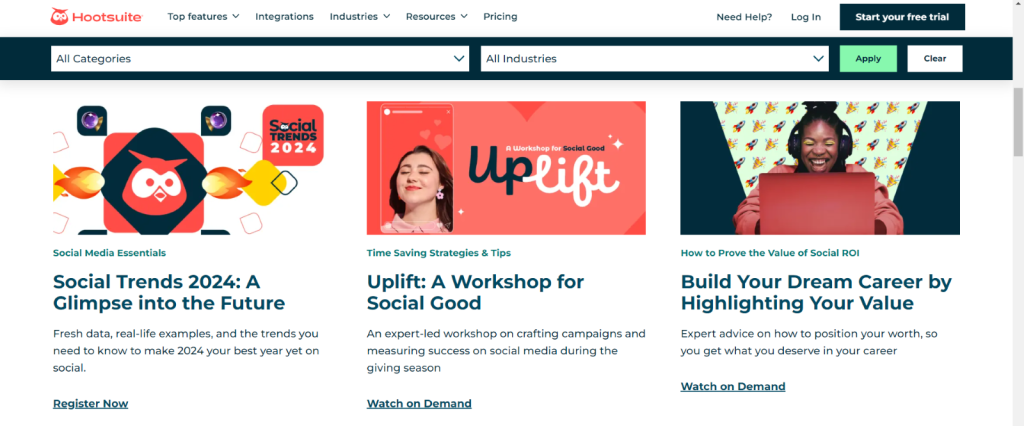
Through webinars, Hootsuite and HubSpot have been able to establish themselves as industry leaders by providing insightful information, showcasing their expertise, and fostering direct interactions with their audience. Moreover, webinars serve as an effective channel for lead generation, enabling both Hootsuite and HubSpot to capture valuable leads and convert them into loyal customers. The success of a webinar lies not only in the content presented but, in the connections that are forged during the live event.
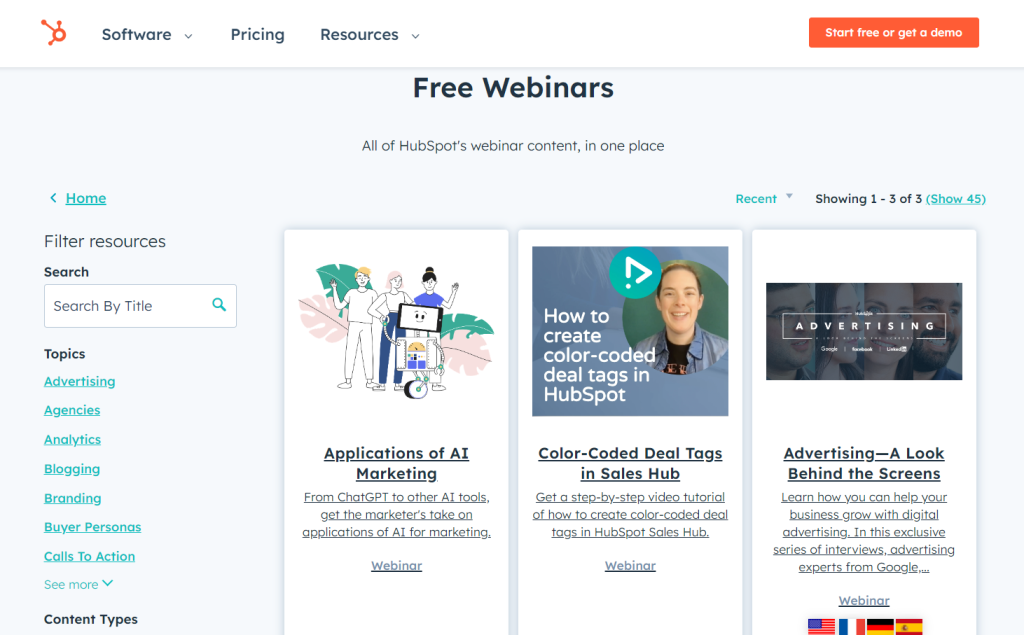
10. Case studies
Case studies are narratives that bring your solutions to life. Sharing success stories and case studies can build credibility and demonstrate the real-world impact of your products or services.
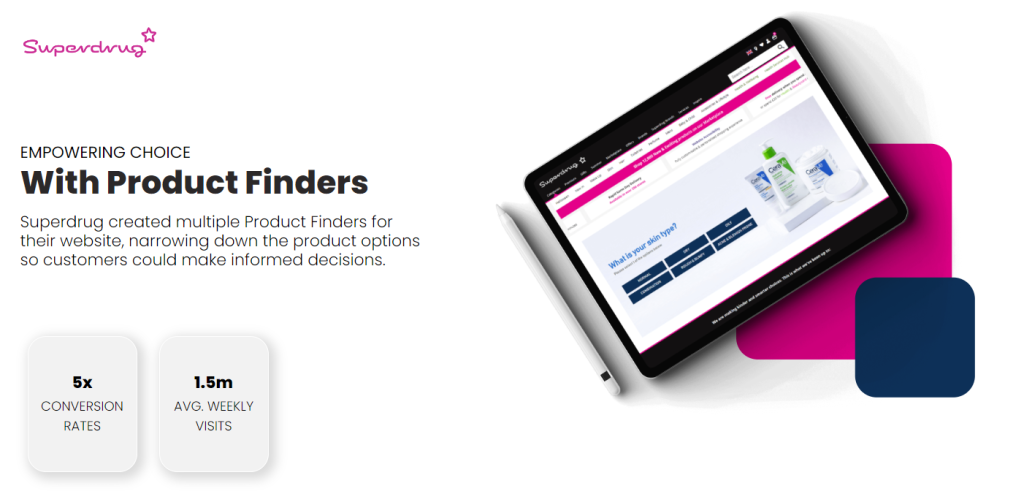
When crafting case studies, focus on the human element. Highlight the journey of your clients, the obstacles they faced, and how your product or service made a tangible difference. Provide specifics about the features or strategies employed and how they were tailored to meet the unique needs of your client.
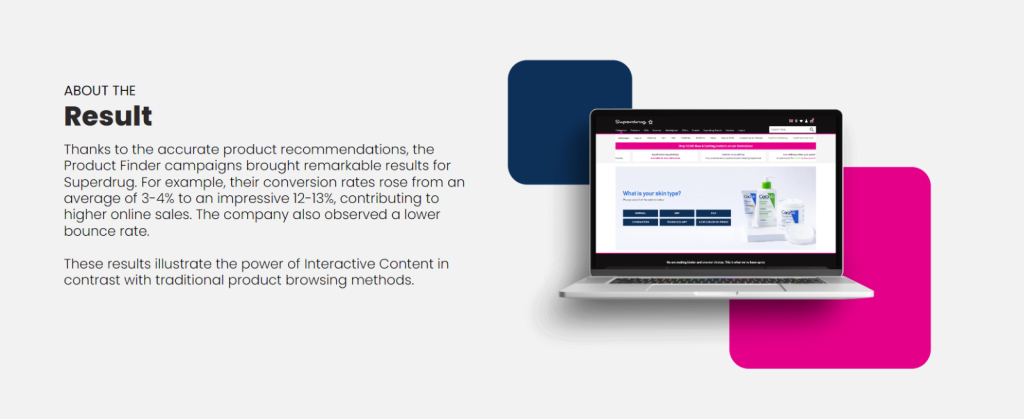
This not only showcases the versatility of your offerings but also offers valuable insights for potential customers seeking similar solutions. Real-world success stories not only build credibility but also create a relatable narrative that fosters trust.
11. User-Generated Content (UGC)
Your audience is not just a passive consumer, they’re contributors to your brand’s story. User-generated content is a testament to the impact your brand has on individuals. Encouraging your audience to create and share content related to your brand can amplify your reach and build a sense of community.
Encourage user-generated content through contests or challenges. Simple invitations for your audience to share their experiences can be equally powerful. Whether it’s a call-to-action on social media, a dedicated section on your website, or an email campaign encouraging submissions, these direct appeals empower your audience to become active storytellers.

The authenticity in user-generated content has a profound impact on your brand’s credibility. When potential customers see real people using and enjoying your products or services, it adds a layer of trust that traditional marketing strategies may struggle to achieve.
12. Gated content
Gated content, far from being about restriction, revolves around offering something valuable in exchange for your audience’s attention. It’s not solely about leads but about creating a subscriber base that appreciates the exclusivity you provide.
Ensure a clear value proposition when implementing gated content, whether it’s an exclusive eBook, a comprehensive guide, or early access to premium content, with perceived value outweighing the required action.

Gated content serves as a dual-purpose tool, functioning not only as a lead generation mechanism but also to identify and nurture individuals who are genuinely interested in what your brand has to offer. The act of willingly providing contact information in exchange for premium content indicates a higher level of engagement and interest.
13. Live streaming
Live streaming represents a shift towards real-time engagement rather than a passing trend. It’s not about polished presentations but about creating moments for your audience to be a part of, fostering a connection that transcends pixels.
Authenticity is key in live streaming. Whether you’re offering behind-the-scenes glimpses, conducting live Q&A sessions, or presenting product demonstrations, the unscripted and real-time nature of live streaming allows your brand to showcase its genuine personality. This authenticity resonates deeply with audiences, as they appreciate the raw and unfiltered moments that make your brand relatable. The unscripted nature of live streaming fosters a genuine connection with your audience.
14. Augmented reality content
Indeed, augmented reality or virtual reality content is not a futuristic concept but it’s a tool for immersive experiences. Unlike traditional engagement methods, AR empowers your audience to virtually engage with your products or services, offering a level of interactivity that goes beyond what was previously imaginable.

The interactive nature of AR content not only captures attention but also fosters a sense of excitement and curiosity. It transforms your brand into an experience, where customers actively participate rather than passively consume. This heightened engagement can lead to a more memorable and positive perception of your brand, ultimately influencing purchasing decisions. Explore how AR can enhance your product or service experience, allowing customers to virtually try products or visualize the benefits of your service. AR adds a layer of interactivity that captivates and entertains your audience.
15. Website popups
I know what you’re thinking, popups are intrusive elements. However, when used strategically, they become tools for engaging visitors with timely offers. Whether it’s a discount, newsletter subscription, or access to exclusive content, website popups can capture attention and convert casual visitors into leads.
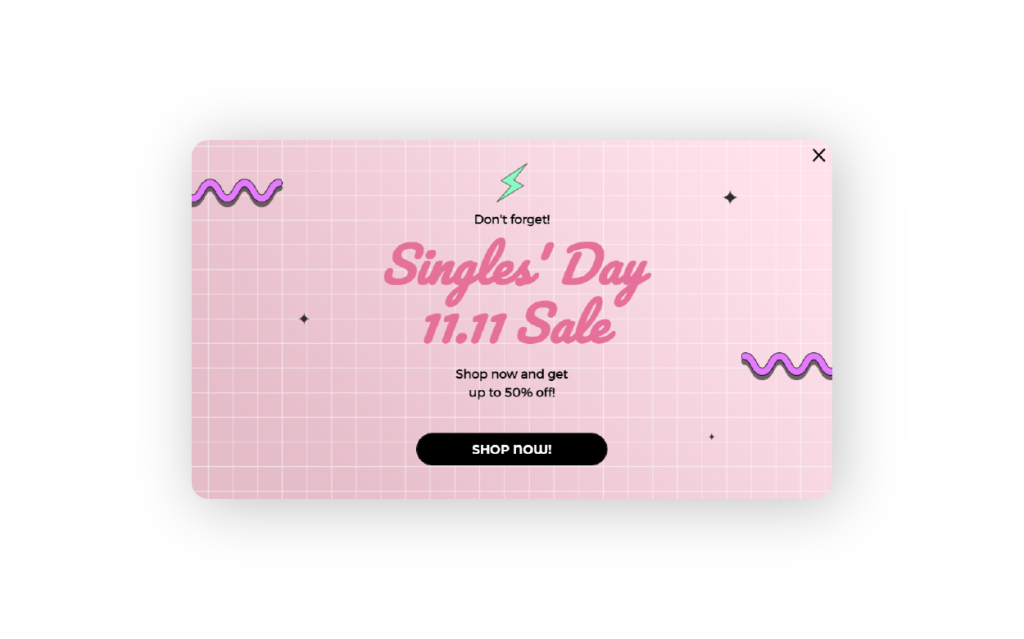
Ensure that your popups are visually appealing and offer clear value. Whether it’s a limited-time promotion or a free resource, the goal is to make the popup a seamless part of the user experience, providing value without disrupting the overall website navigation. Users should easily understand what they stand to gain, which creates a sense of curiosity and motivation to engage with the popup.
And what’s more important is the timing of the popup. Implement exit-intent popups to engage visitors who are about to leave the site. This way, you won’t be interrupting their browsing experience but rather presenting an offer as they are preparing to exit your website. This way, you will potentially be able to capture their interest and retain their attention.
16. Polls
Polls are opportunities to engage your audience and crowdsource opinions. Use polls to gather insights on current trends, preferences, or upcoming product features. This interactive engagement not only involves your audience but also provides valuable data for refining your strategies.
When creating polls, keep them concise and relevant. Encourage participation by asking questions that are relatable to your audience’s interests. You can also share the results afterward to show transparency and showcase the collective opinions within your community.
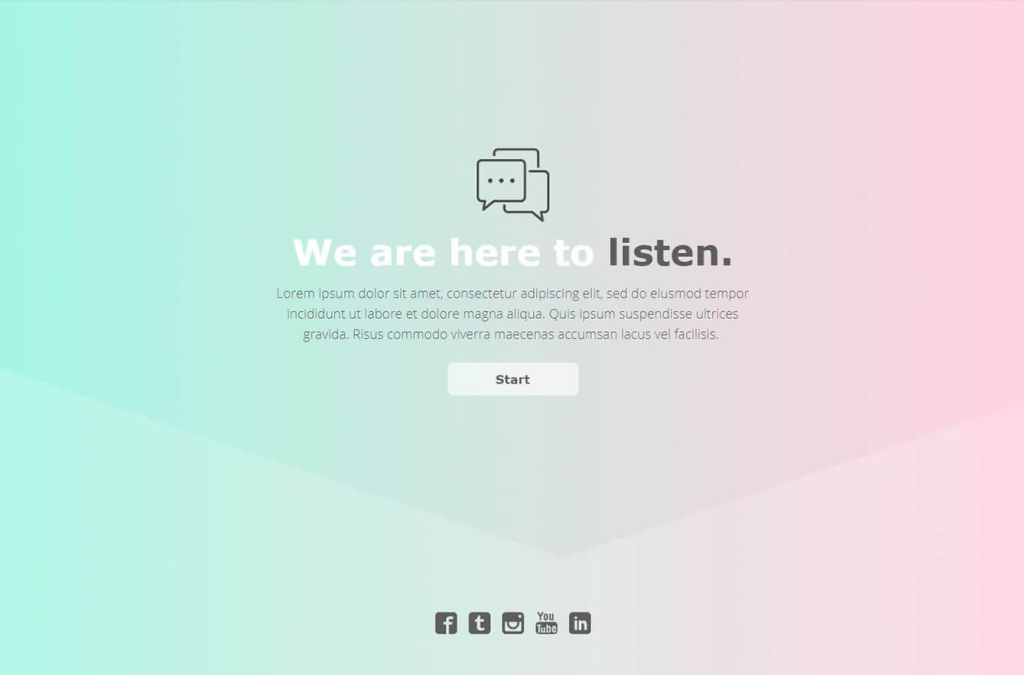
To optimize engagement, tailor your questions to be relatable to your audience’s interests. This not only makes the polling experience more enjoyable for participants but also increases the likelihood of receiving meaningful responses. Understanding your audience’s preferences and curiosities allows you to pose questions that resonate with them, fostering a sense of connection and community.
17. Surveys
Who says surveys can’t be engaging? Not us! Surveys are tools for understanding your audience’s preferences, challenges, and expectations. Conducting surveys can provide valuable data that shape your content strategy, product development, and overall business approach.
Moreover, surveys can be transformed into enjoyable experiences through thoughtful design. Incorporating interactive elements, Gamification, and personalized touches adds a playful dimension. Utilizing visual content, storytelling techniques, and humour makes the survey process more engaging.

When designing surveys, balance the depth of questions with the time required for completion. Offer incentives, such as discounts or exclusive content, to encourage participation. The objective is to create surveys that not only gather comprehensive data but also make your audience feel heard and valued.
18. News and press releases
News and press releases serve as potent tools for amplifying your brand’s milestones and accomplishments. Crafting compelling press releases can garner media attention and enhance your brand’s credibility. In fact, 68% of businesses reported that publishing a press release raised brand/product visibility.
The power of a well-crafted press release lies in its potential to spark conversations. Beyond the traditional media channels, consider sharing your releases across your social media platforms, newsletters, and other communication channels. This widespread strategy ensures that your news reaches various segments of your audience, increasing visibility and engagement.
So, ensure your press releases are well-written, concise, and contain key information. Distribute them to relevant media outlets and use them as content on your website. Your aim should be to turn your achievements into stories that resonate with your audience and position your brand as a leader in your industry.
19. Contests
Online contests doubles as a dynamic tool for sparking excitement and encouraging audience participation. Whether it’s a photo contest, a caption competition, or a creative challenge, contests can generate buzz around your brand and create a sense of community engagement.
When planning contests, align them with your brand identity and values. Choose themes that resonate with your audience and encourage creativity. Leverage social media and other channels to promote the contest, creating a ripple effect of engagement and brand awareness.

Quaker’s Bring Your Best Bowl Contest is a great example of a collaborative approach between brands and consumers. Participants were invited to cast their votes for the next flavour to hit store shelves. With an overwhelming response of over half a million submissions, participants were not just voting but actively contributing to the creative process. This contest showcases how brands can collaborate with consumers by giving them an opportunity to have a say in what kinds of products will be produced.
20. Courses
Online courses are a powerful means to educate your audience and establish your brand as an authority in your field. It can be a series of tutorials, workshops, or comprehensive courses, providing educational content can foster trust and loyalty among your audience.
Develop courses that address your audience’s pain points or offer solutions to common challenges. You can use various formats such as videos, quizzes, and downloadable resources to create a dynamic learning experience.
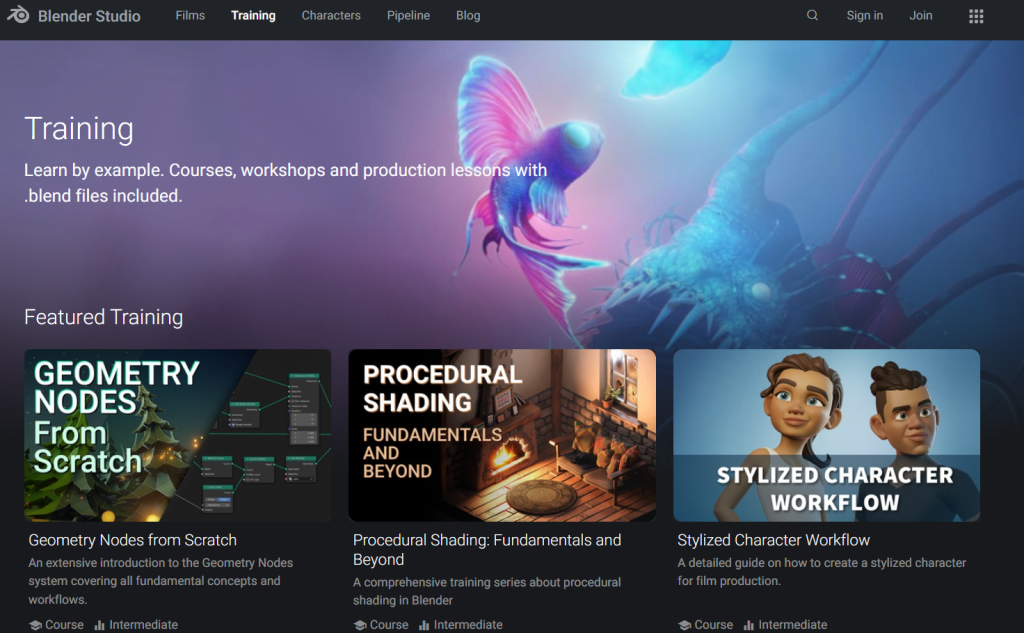
Platforms like Blender offer a range of tutorials and workshops, covering everything from the basics to advanced techniques in 3D modeling, animation, and visual effects. By providing educational content in the form of comprehensive courses, Blender positioned its brand as a go-to resource.
21. Checklists
Checklists represent guides that simplify complex processes. It’s about providing actionable steps that your audience can follow, making their journey smoother and more manageable.
When creating checklists, focus on practicality. Whether it’s a step-by-step guide to achieving a goal or a comprehensive checklist for a specific process, the aim is to provide value through simplicity. Think of them as the GPS for your audience’s journey, providing actionable steps to make it smoother and more manageable. Create them with a focus on practicality, offering step-by-step guidance or comprehensive checklists that empower your audience with actionable insights.
This concept applies to both business-to-business (B2B) and business-to-consumer (B2C) situations. Checklists prove to be valuable tools that help streamline processes and improve user experiences across different business domains.
In B2B operations, checklists are crucial for maintaining quality, streamlining projects, and complying with regulations. For example, picture a seamless customer onboarding process or a well-managed supply chain—all guided by meticulously crafted checklists. Checklists also enhance communication, improve training, optimize customer relationships, and serve as performance trackers. Overall, they play a key role in harmonizing B2B operations for increased efficiency.
Checklists can help revolutionize a customer journey in the B2C industry. Let’s take retail for example, checklists are crucial in enhancing your customers’ shopping experience. For instance, providing tools like item lists and store information aids in shopping preparation, while in-store navigation can be improved with maps and guides. Highlighting popular items, for example, ensures quick reference and a seamless shopping journey.
Here are key principles to keep in mind when creating checklists:

22. Guides and How-tos
Guides are not just informative documents; they’re roadmaps to becoming an expert in your field. When creating a guide, it’s important to note that It’s not just about providing information, instead, it’s about guiding your audience through processes and challenges, establishing your brand as a knowledgeable companion on their journey. This is achieved by incorporating a conversational tone that resonates with your audience, making them feel accompanied and understood.

Craft guides that go beyond the basics, offering in-depth insights and practical tips. Furthermore, guides should evolve alongside your industry. Regular updates demonstrate a commitment to staying at the forefront of knowledge, reinforcing your brand’s position as a reliable and authoritative source. By positioning your brand as a reliable source of expertise, you become a go-to resource for your audience seeking guidance in your industry or niche.
23. Influencer marketing
In a world flooded with ads, influencers are like friendly neighbours vouching for your brand. Think of it as inviting a trusted friend to introduce your brand to their circle—prioritize relevance over follower count for an authentic connection. Influencer marketing is a strategy that leverages not only reach but also authenticity. According to Linqia, 36% of brands say influencer content outperforms branded content.

Building a genuine connection is not a one-size-fits-all endeavour. Customize your approach for each influencer, understanding their unique style and content preferences. This tailored strategy ensures that your brand seamlessly integrates into the influencer’s narrative, enhancing authenticity and relatability. When influencers authentically endorse your brand, they tap into the trust they’ve meticulously built with their audience. This trust becomes a bridge, allowing your brand to connect with potential customers on a deeper level.
24. Micro-content
Micro-content is bite-sized content that can be shared on popular short-form video platforms like Instagram Reels, TikTok, and YouTube Shorts. These platforms have become vibrant hubs for quick, engaging videos tailored to users’ brief attention spans.
Instagram reels:
Instagram Reels offers a format of short, entertaining videos typically ranging from 15 to 30 seconds. Research shows that Instagram users spend an average of 53 minutes on short-form videos. This is why brands leverage this feature to showcase their personality through visually appealing and easily shareable content within Instagram.
TikTok:
TikTok thrives on bite-sized videos, often just 15 seconds long, featuring creative content, dances, challenges, or storytelling. As a matter of fact, average TikTok users open the app around 9 times every day! This statistic highlights that TikTok provides a playful and dynamic environment where brands can connect with a diverse, global audience through engaging and easily shareable content.
YouTube Shorts:
In February 2023, Google revealed that YouTube Shorts achieved an impressive milestone with 50 billion daily views, totaling 1.5 trillion views per month. This staggering statistic underscores the platform’s immense popularity.
YouTube Shorts offers brief videos of up to 60 seconds, designed for quick consumption and discoverability. Integrated within the YouTube platform, shorts provide an additional avenue for brands to engage audiences through concise and visually appealing content.
Consider how short-form content can easily be woven into your overall content strategy. Micro-content is perfect for capturing attention in a world of constant scrolling, providing your audience with quick, valuable videos that leave a lasting impression.
25. Product demos and reviews
When showcasing product demonstrations and reviews, the goal isn’t just to promote; it’s to build trust by sharing authentic stories from users, letting you see what happens behind the scenes.
When you demo your products, you want to highlight how your product can make a real difference in their life and address the challenges your audience might be facing. The reviews you read, whether they’re heartfelt testimonials or user stories, serve as proof that your products are valued and reliable.
The power of authentic user reviews lies in their role as social proof. They go beyond typical marketing claims (you know which one’s we’re talking about…). It provides real-life examples of how your products or services have positively impacted individuals. This social proof is a powerful psychological motivator, assuring potential customers that others have tried, tested, and approved your offerings.
Skyrocket to success with these content marketing types!
As we wrap up this exploration of the types of content marketing you can incorporate into your upcoming strategies, remember, it’s not about adopting every type blindly. It’s about understanding your audience, experimenting with what resonates, and consistently updating your strategy.
The digital world is constantly changing, consequently, your approach to content marketing should adapt accordingly. The journey doesn’t end here; it’s a continuous adventure of creativity, engagement, and growth.
Dot.vu specializes in Interactive Content, providing a platform that allows users to explore a variety of content marketing types for free. Dot.vu also emphasizes the importance of personalization in content marketing. With Dot.vu, you have the opportunity to explore a variety of content marketing types for free. Simply sign up for a free account and unlock the potential to innovate and connect with your audience. Our platform allows you to tailor your Interactive Content to specific audience segments, ensuring a more personalized and relevant user experience. The possibilities are endless with Dot.vu, so go ahead and embrace the power of the many content types, and let your business soar.
